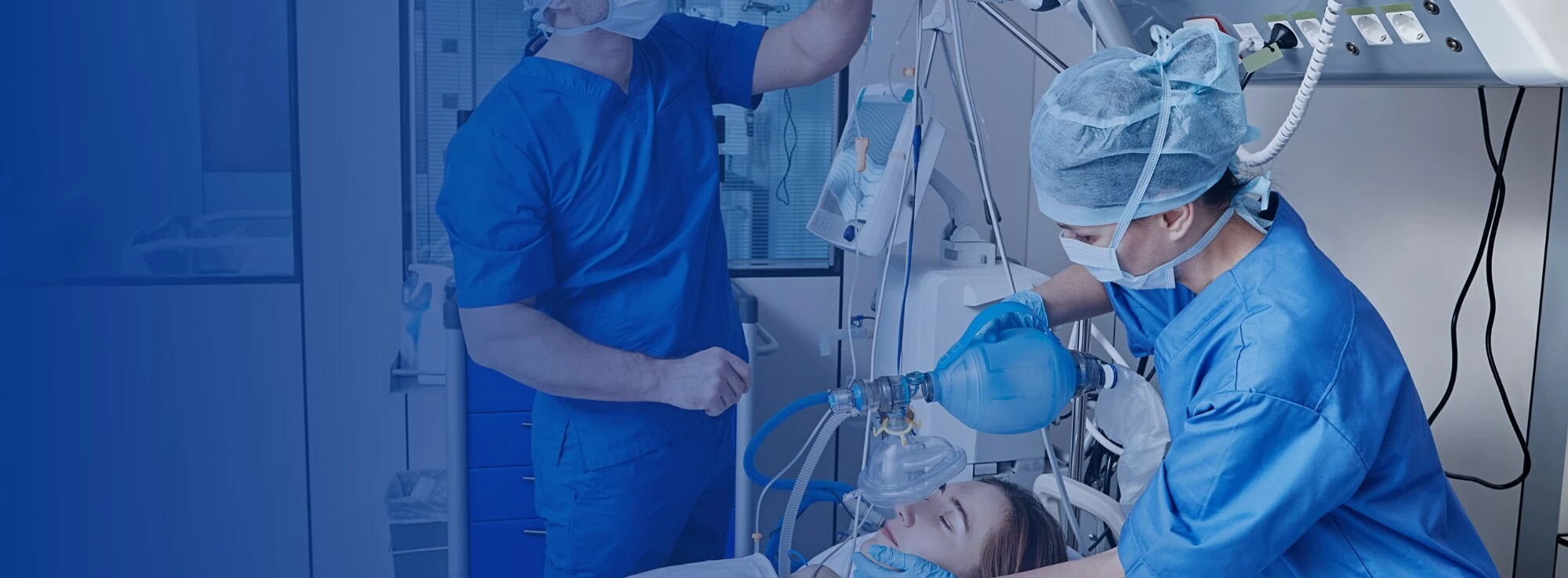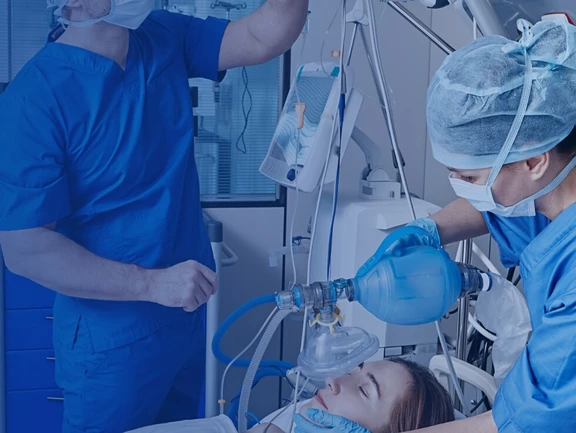Ventilation and gas supply: Survival despite inadequate lung function
The possibility of ventilation undoubtedly represents one of the most important milestones in medicine. In ancient times, Hippocrates was already practicing rudimentary forms of active oxygenation around 400 BC. Even today, anesthesia would be inconceivable without various forms of ventilation. Patients who suffer a cardiovascular arrest, fall into a coma or have to be placed in an artificial coma would die immediately without the possibility of ventilation. Medical oxygen, which is supplied via mechanical ventilation systems, is one of the most important pieces of equipment in any medical facility with an intensive care unit.
However, medical gas supply does not only include devices for direct or indirect ventilation of the patient. Systems for the use and production of compressed air and vacuum are also indispensable in hospitals. Centralized and decentralized gas supply in the medical sector is subject to stricter guidelines than process air systems in industry. Patients must be protected from any exposure to germs, especially during surgical procedures or immunosuppression. Of course, this mainly applies to gases with which the patient comes into direct or indirect contact.
Medical oxygen from the oxygen cylinder, which in most cases is administered via an oxygen mask, is not the only gas that is inhaled directly. The mandatory, absolute purity of the supplied air applies equally to anesthetic gases such as nitrous oxide and a range of volatile anesthetics such as enflurane and halothane. In the field of diagnostics, lung function gases should also be mentioned, which can be used to check the function of the respiratory system.
Did you know? Facts worth knowing about ventilation and gas supply
Ventilation refers to the process of assisting or completely taking over the gas exchange activity of the lungs via an external influence. It is indicated if the patient is unable to supply themselves with sufficient oxygen, for example because their airways are not clear. There are three different forms of ventilation:
- nasal-mouth ventilation,
- mask-bag ventilation and the
- mechanical ventilation
Both mask-bag ventilation and mechanical ventilation usually require intubation in unconscious patients. A tube is inserted into the throat or into the windpipe using a laryngoscope. Ventilation is usually not carried out with pure oxygen, but with a humidified air mixture at positive pressure. However, particular attention must always be paid to the oxygen content, regardless of whether an oxygen mask is used, a mobile oxygen cylinder or a central gas supply. If the oxygen content in the air mixture drops to 6%, unconsciousness will occur within 40 seconds.
Compressed air and vacuum for medical purposes are also therapeutically significant. They are not only required for anesthesia, various instruments and devices, but are also used, for example, to protect the retina during certain eye operations. They are used for all types of suction as well as for drying and sterilizing instruments. Less well-known medical gases include nitrogen monoxide and carbon dioxide. Nitric oxide is better known as a harmful substance that irritates the mucous membranes, but in careful doses it proves useful in widening the blood vessels in the pulmonary circulation and thus improving the oxygen supply to the blood. Carbon dioxide, on the other hand, is used during operations to expand cavities of all kinds.
The optimized gas management system
All systems and pipelines for medically used gases are highly sensitive systems and are therefore, of course, strictly regulated. They must at least meet the requirements of DIN EN ISO 7396-1. This applies to medical gases such as medical oxygen, nitrous oxide and carbon dioxide, as well as air and nitrogen for driving and operating surgical tools, and also includes piping systems for vacuum. The prescribed media supply for intensive care treatment units must also be taken into account when planning and operating the gas supply. It can be provided either via wall duct systems or ceiling supply units. Each treatment station requires three to four connections each for medical oxygen (5 bar), medical compressed air (5 bar) and vacuum from at least two separate circuits, as well as an anesthetic gas drain.
Sufficient gas cylinders should be available for emergency supply, supplementation or as a temporary solution. Each gas cylinder should be easily accessible and the label should be easy to read, even from a distance. Clear organization is essential; every oxygen cylinder should be immediately to hand. It is essential to work with as many standard rails and trolleys as possible so that no valuable seconds are wasted if the oxygen cylinder or oxygen mask is needed immediately. Moving parts such as the valve and the valve protection cap of each individual gas cylinder must be checked particularly frequently. As wearing parts with considerable relevance for the safety of patients and staff, no savings should be made here.
A large selection of gas cylinder racks & carrying devices
We recommend working with permanently installed gas cylinder holders and mobile gas cylinder racks for all types of medical gases. The size of each gas cylinder rack and each gas cylinder holder should be taken into account when planning the relevant rooms and equipment. Although retrofitting is always possible, the gas supply process always works best when each gas cylinder has its fixed location.
This also avoids bottlenecks because an empty gas cylinder holder immediately catches the eye. We recommend working with a permanently installed gas cylinder holder and mobile gas cylinder rack for all types of medical gases.
The size of each gas cylinder rack and each gas cylinder holder should already be taken into account when planning the corresponding rooms and furnishings. Although retrofitting is always possible, the gas supply always works best if each gas cylinder has its own fixed place. This also avoids bottlenecks, as an empty gas cylinder holder immediately catches the eye.
Buschmeier medical products - quality instead of risk
As a manufacturer, we want to take away all uncertainties regarding the quality of your work equipment and at the same time make your everyday life easier with various structural installations and mobile aids. As an EN ISO 13485 certified company, we take our responsibility very seriously and only produce high-quality holders and equipment with suitable combinable components for all work areas in the field of ventilation and gas supply. The best place to start optimizing your gas management system is with the planning and procurement of standard rails for all devices and installations. Our range includes all common standard rail sizes and suitable practical components for effective use. Next, create the opportunity to use every gas cylinder as quickly as possible with a permanently installed gas cylinder holder for every oxygen cylinder and every other gas cylinder. Make sure that the gas cylinders are stored in the planned location with or without a protective valve cap. To ensure safe handling of your gas cylinders, we naturally also have the right cylinder jackets, cylinder covers and valve caps for valves and pressure reducers. Add a mobile gas cylinder rack with one or two spaces for gas cylinders to your room layout and storage areas. Many of our mobile racks also offer space for other appliances and accessories to keep the working environment organized and make cleaning easier. You do not necessarily have to attach a gas cylinder holder to both sides of each gas cylinder rack. You can also simply use one of our cylinder holders with a rotating claw.
If you have any questions, need expert advice on planning your holder systems or require a custom-made product, we will of course be happy to help you by phone or using our contact form.













